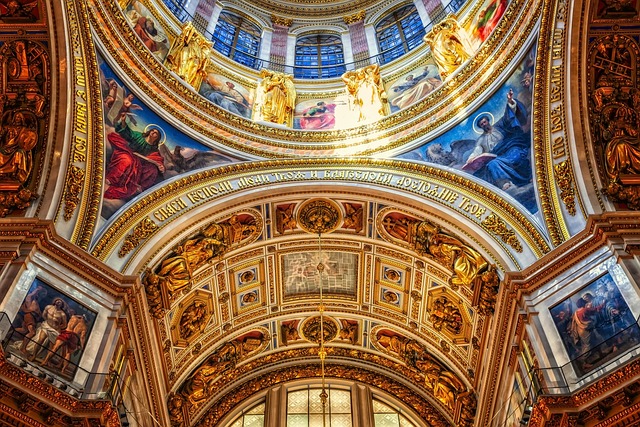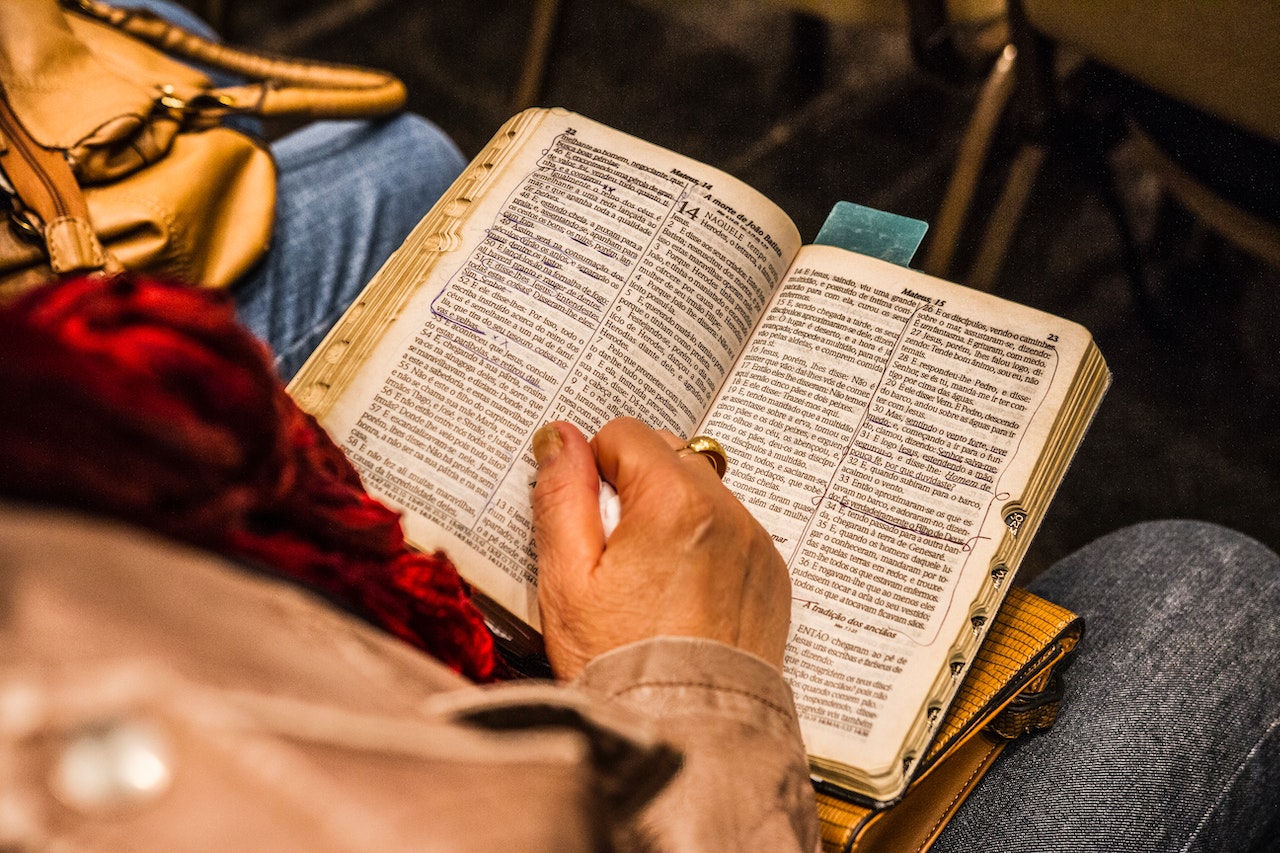Orthodox Christianity originated in the early centuries of the Christian era, tracing its roots back to the apostolic times. It emerged as one of the major branches of Christianity, alongside Roman Catholicism and Protestantism. The development of Orthodox Christianity can be attributed to various factors, including theological disputes, cultural differences, and political divisions within the early Christian community. Over time, it evolved into a distinct tradition with its own beliefs, practices, and organizational structure.
Table of Contents
The Early Development of Orthodox Christianity
Orthodox Christianity, one of the oldest branches of Christianity, has a rich and fascinating history that dates back to the early days of the faith. In this article, we will explore the early development of Orthodox Christianity and how it originated.
The origins of Orthodox Christianity can be traced back to the time of Jesus Christ and his apostles. After Jesus’ crucifixion and resurrection, his followers spread his teachings throughout the Roman Empire. These early Christians faced persecution and were often forced to practice their faith in secret.
Despite the challenges they faced, the early Christians were determined to preserve the teachings of Jesus and pass them on to future generations. They formed communities and gathered in homes to worship and study the scriptures. These gatherings became the foundation of what would later become the Orthodox Church.
As the Christian community grew, so did the need for organization and leadership. The apostles appointed bishops to oversee the various communities and ensure the unity of the faith. These bishops were seen as successors to the apostles and were responsible for teaching and guiding the faithful.
Over time, certain cities gained prominence as centers of Christian influence. Rome, Alexandria, Antioch, Jerusalem, and Constantinople emerged as important Christian cities, each with its own unique traditions and practices. These cities became known as the “Pentarchy,” and their bishops held significant authority within the Church.
In the early centuries of Christianity, theological debates and controversies arose, challenging the unity of the faith. One of the most significant controversies was the Arian controversy, which centered around the nature of Jesus Christ. The Council of Nicaea in 325 AD played a crucial role in resolving this controversy and establishing the orthodox understanding of Christ’s divinity.
Another important figure in the early development of Orthodox Christianity was Emperor Constantine. In 313 AD, he issued the Edict of Milan, which granted religious freedom to Christians and ended the persecution they had faced for centuries. Constantine’s support and patronage of the Church allowed Christianity to flourish and gain influence in the Roman Empire.
As the Church grew in size and influence, it faced new challenges. The fall of the Western Roman Empire in 476 AD led to a division between the Eastern and Western branches of Christianity. The Eastern Church, centered in Constantinople, became known as the Eastern Orthodox Church, while the Western Church, centered in Rome, became known as the Roman Catholic Church.
Despite this division, Orthodox Christianity continued to thrive in the Byzantine Empire. The Byzantine emperors played a significant role in shaping the Church and its practices. They convened councils, such as the Council of Chalcedon in 451 AD, to address theological controversies and establish orthodox doctrine.
In conclusion, Orthodox Christianity originated in the early days of the faith, as Jesus’ followers spread his teachings throughout the Roman Empire. The early Christians faced persecution but were determined to preserve the teachings of Jesus. They formed communities and appointed bishops to oversee the faith. Over time, important cities emerged as centers of Christian influence, and theological controversies arose. Emperor Constantine’s support and patronage allowed Christianity to flourish, and the Church faced new challenges with the division between the Eastern and Western branches. Despite these challenges, Orthodox Christianity continued to thrive and develop, shaping the faith we know today.
Key Figures and Events in the Origins of Orthodox Christianity

Orthodox Christianity, one of the oldest branches of Christianity, has a rich and fascinating history that dates back to the early days of the faith. In this article, we will explore the key figures and events that played a crucial role in the origins of Orthodox Christianity.
One of the most influential figures in the early development of Orthodox Christianity was Saint Paul. Born as Saul of Tarsus, he was a zealous persecutor of Christians until he had a transformative encounter with Jesus on the road to Damascus. This encounter led to his conversion and he became one of the most important apostles of Jesus. Saint Paul’s teachings and writings played a significant role in shaping the early Christian community and laying the foundation for what would later become Orthodox Christianity.
Another key figure in the origins of Orthodox Christianity was Saint Peter, who is considered by many to be the first pope. He was one of the twelve apostles chosen by Jesus and played a crucial role in spreading the message of Christianity. Saint Peter’s leadership and teachings were instrumental in the early growth of the Christian community, and his martyrdom in Rome solidified his status as a revered figure in the faith.
The Council of Nicaea, held in 325 AD, was a pivotal event in the history of Orthodox Christianity. This council was convened by Emperor Constantine to address the growing divisions within the Christian community, particularly the Arian controversy. The council resulted in the formulation of the Nicene Creed, which established the orthodox understanding of the nature of Christ as fully divine and fully human. The decisions made at the Council of Nicaea laid the groundwork for the development of Orthodox Christian theology and doctrine.
Another significant event in the origins of Orthodox Christianity was the Great Schism of 1054. This event marked the formal split between the Eastern Orthodox Church and the Roman Catholic Church. The primary cause of the schism was a disagreement over the authority of the pope and the use of unleavened bread in the Eucharist. The schism had far-reaching consequences and led to the establishment of two distinct branches of Christianity, each with its own traditions and practices.
Throughout its history, Orthodox Christianity has been shaped by the lives and teachings of countless saints and theologians. One such figure is Saint Athanasius, who played a crucial role in defending the orthodox understanding of the Trinity against the Arian heresy. His writings and teachings continue to be influential in Orthodox theology to this day.
In conclusion, the origins of Orthodox Christianity can be traced back to the early days of the faith and have been shaped by key figures and events throughout history. From the teachings of Saint Paul and Saint Peter to the Council of Nicaea and the Great Schism, each of these factors has played a significant role in the development of Orthodox Christian theology and practice. Today, Orthodox Christianity continues to thrive as a vibrant and enduring branch of the Christian faith.
Theological Differences and Schisms in Early Orthodox Christianity
Orthodox Christianity, one of the oldest branches of Christianity, has a rich and complex history that dates back to the early days of the faith. Understanding how Orthodox Christianity originated requires delving into the theological differences and schisms that shaped its development.
In the early centuries of Christianity, theological debates were common as believers sought to define and understand their faith. These debates often centered around key doctrines, such as the nature of Christ and the Trinity. One of the most significant theological differences that emerged was the debate between the Eastern and Western churches over the procession of the Holy Spirit.
The Eastern churches, which would later become the Orthodox Church, believed that the Holy Spirit proceeded from the Father alone. On the other hand, the Western churches, led by the Roman Catholic Church, argued that the Holy Spirit proceeded from both the Father and the Son. This theological disagreement, known as the Filioque controversy, was a major point of contention between the two branches of Christianity.
Over time, these theological differences led to a growing divide between the Eastern and Western churches. Cultural and political factors also played a role in exacerbating this divide. The Roman Empire, which was centered in the West, began to decline, while the Byzantine Empire, which was centered in the East, thrived. This shift in power further deepened the divide between the two branches of Christianity.
In 1054, the Great Schism occurred, officially separating the Eastern and Western churches. This schism was the culmination of centuries of theological disagreements and cultural differences. The Eastern churches, which rejected the authority of the Pope and emphasized the importance of the local bishop, became known as the Orthodox Church, while the Western churches remained under the authority of the Pope and became known as the Roman Catholic Church.
Despite the schism, Orthodox Christianity continued to flourish in the East. The Byzantine Empire, with its capital in Constantinople, became a center of Orthodox theology and worship. The Byzantine Emperor played a significant role in the affairs of the Church, often appointing bishops and influencing theological debates.
Throughout its history, Orthodox Christianity has faced numerous challenges and schisms. In the 16th century, the Protestant Reformation further divided the Christian world, with some Eastern churches embracing Protestant teachings while others remained steadfast in their Orthodox beliefs.
In more recent times, political and social changes have also impacted Orthodox Christianity. The fall of the Byzantine Empire in 1453 and the rise of communism in the 20th century led to the persecution and suppression of the Orthodox Church in certain regions.
Despite these challenges, Orthodox Christianity has remained a vibrant and enduring faith. Today, it is practiced by millions of believers around the world, with strongholds in Eastern Europe, Russia, and the Middle East.
In conclusion, the origins of Orthodox Christianity can be traced back to the theological differences and schisms that shaped its development. The Filioque controversy and the Great Schism were pivotal moments in the history of the faith, leading to the establishment of the Orthodox Church as a distinct branch of Christianity. Despite facing numerous challenges throughout its history, Orthodox Christianity has persevered and continues to be a significant force in the world of Christianity today.
The Spread and Influence of Orthodox Christianity throughout History
Orthodox Christianity, one of the oldest branches of Christianity, has a rich and fascinating history that spans over two thousand years. Its origins can be traced back to the early days of the Christian faith, when the teachings of Jesus Christ began to spread throughout the Roman Empire.
The spread of Orthodox Christianity can be attributed to a variety of factors. One of the most significant was the conversion of Emperor Constantine to Christianity in the 4th century. This event not only legitimized the faith but also allowed for its widespread acceptance and promotion throughout the empire. With the backing of the emperor, Orthodox Christianity quickly became the dominant religion in the Byzantine Empire.
The Byzantine Empire, with its capital in Constantinople (modern-day Istanbul), played a crucial role in the spread and influence of Orthodox Christianity. The empire served as a cultural and religious center, attracting scholars, theologians, and artists from all over the world. The Byzantine Empire’s influence extended far beyond its borders, as it established trade routes and diplomatic ties with neighboring kingdoms and empires.
One of the most significant contributions of the Byzantine Empire to Orthodox Christianity was the development of the Byzantine liturgical tradition. This tradition, characterized by its elaborate rituals and beautiful iconography, continues to be an integral part of Orthodox worship to this day. The Byzantine liturgical tradition not only shaped the religious practices of Orthodox Christians but also influenced the art and architecture of the empire.
The influence of Orthodox Christianity also extended to the Slavic world. In the 9th century, two Byzantine missionaries, Cyril and Methodius, developed the Cyrillic alphabet and translated the Bible into Old Church Slavonic. This allowed for the spread of Orthodox Christianity among the Slavic peoples, who adopted the faith and developed their own unique traditions and practices.
Throughout history, Orthodox Christianity has faced numerous challenges and undergone significant changes. The Great Schism of 1054, which divided Christianity into the Eastern Orthodox and Roman Catholic Churches, was a pivotal moment in the history of Orthodox Christianity. This division not only had theological implications but also had political and cultural consequences, as it further separated the Eastern and Western worlds.
Despite these challenges, Orthodox Christianity has managed to survive and thrive. Today, it is one of the largest Christian denominations in the world, with millions of followers spread across different countries and continents. Its influence can be seen in the art, architecture, and cultural traditions of many nations, particularly those in Eastern Europe and the Middle East.
In conclusion, the spread and influence of Orthodox Christianity throughout history can be attributed to various factors, including the conversion of Emperor Constantine, the cultural and religious significance of the Byzantine Empire, and the missionary efforts of Cyril and Methodius. Despite facing challenges and undergoing changes, Orthodox Christianity has managed to endure and leave a lasting impact on the world. Its rich history and traditions continue to be cherished by millions of believers around the globe.
Conclusion
Orthodox Christianity originated in the 1st century AD as a result of the teachings and ministry of Jesus Christ and his apostles. It developed as a distinct branch of Christianity in the Eastern Roman Empire, with its center in Constantinople (now Istanbul). The Great Schism of 1054 further solidified the separation between the Eastern Orthodox Church and the Roman Catholic Church. Today, Orthodox Christianity is practiced by millions of believers worldwide, with various national and regional traditions within the faith.
For licensing reasons, we must provide the following notice: This content was created in part with the help of an AI.


